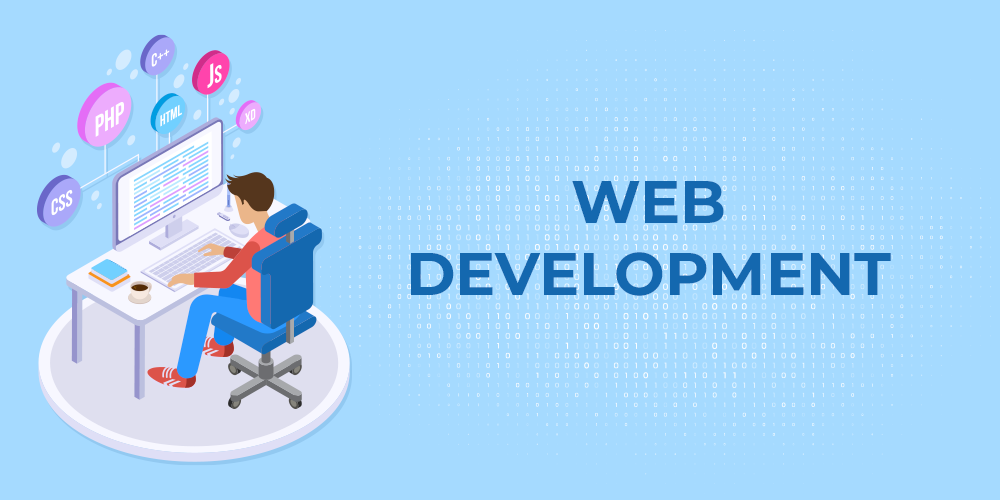Your Guide to Modern Internet Advancement: Trends and Best Practices
In the swiftly developing landscape of internet development, recognizing the most recent fads and best methods is essential for developing appropriate and interesting electronic experiences. Key factors to consider such as user experience, responsive layout, and access are not simply optional yet essential to the success of modern-day applications. Moreover, the emergence of Progressive Internet Applications and the assimilation of AI technologies indicate a substantial change in exactly how programmers approach their craft. As we discover these crucial aspects, it ends up being clear that remaining educated is not just useful-- it's crucial for those intending to excel in this dynamic area.
Arising Technologies in Internet Growth
The advancement of internet advancement is marked by an unrelenting search of innovation, driven by the desire to enhance customer experience and simplify procedures. Emerging technologies remain to reshape the landscape, supplying developers effective devices to develop even more dynamic and responsive applications. Key among these modern technologies are Dynamic Internet Apps (PWAs), which mix the most effective of web and mobile apps, giving offline functionality and boosted performance.
Another substantial innovation is the increase of Artificial Intelligence (AI) and Device Understanding (ML), which make it possible for customized user experiences and data-driven decision-making. These modern technologies assist in chatbots, referral systems, and improved search functionalities, therefore transforming exactly how users connect with web applications.
Furthermore, the fostering of frameworks like React, Vue.js, and Angular has actually transformed front-end growth, promoting modular style and efficient state monitoring. On the back end, serverless style and microservices foster scalability and adaptability, enabling designers to concentrate on creating code without handling framework.
Significance of Customer Experience
Individual experience (UX) has actually come to be a pivotal emphasis in web growth, particularly as emerging modern technologies reshape communications. A favorable UX not only boosts user satisfaction however additionally drives engagement, retention, and conversions. ecommerce web development perth. In a progressively affordable electronic landscape, businesses should focus on UX to separate themselves and meet individual assumptions
Effective UX style is rooted in recognizing customer needs and behaviors. This includes carrying out extensive study, creating user personalities, and using functionality screening to gather understandings. By doing so, designers can develop intuitive interfaces that facilitate seamless navigating and reduce friction points.
Additionally, a well-designed UX can considerably affect an internet site's efficiency metrics. Research studies have shown that customers are more probable to desert a site if they run into bad usability or extreme packing times. Conversely, a streamlined, user-centric design can lead to lower bounce rates and enhanced time invested in the site.
Embracing Receptive Layout
In today's diverse electronic landscape, accepting receptive style is important for guaranteeing optimal individual experiences across numerous gadgets. With an increasing variety of users accessing websites via smart devices, tablet computers, and desktops, a receptive style technique permits content to adjust effortlessly to different display sizes and positionings.
Responsive layout uses liquid grids, flexible pictures, and CSS media questions to create a vibrant format that adjusts in real-time. This technique not only boosts usability however additionally contributes to improved online search engine rankings, as search engines favor internet sites that offer a consistent experience across gadgets. In addition, responsive design minimizes the demand for several variations of a site, simplifying upkeep and updates.
Moreover, responsive style promotes better engagement by providing a tailored experience, maintaining customers on the website much longer and decreasing bounce prices. As customer actions continues to progress, investing in receptive layout is important for organizations intending to enhance customer contentment and drive conversions. In recap, embracing receptive layout is not merely a trend; it is a fundamental practice that aligns with the assumptions of modern customers, ensuring ease of access and performance no matter of the gadget they select to use.
Ease Of Access in Web Development
Creating a website that is both receptive and easily accessible is imperative for getting to a bigger target market. Availability in web development ensures that all users, despite their capacities or handicaps, can successfully engage with digital content. This consists of people with aesthetic, auditory, cognitive, or motor problems.
To accomplish ease of access, developers need to abide by the Internet Material Availability Standards (WCAG), which supply a framework for making internet material a lot more perceivable, operable, reasonable, and durable. Secret practices consist of making use This Site of semantic HTML pop over to this web-site aspects, offering alternative message for pictures, ensuring enough color contrast, and enabling key-board navigation.
Additionally, implementing ARIA (Easily accessible Rich Net Applications) attributes can improve accessibility, especially for vibrant content and progressed interface. Testing with genuine customers, including those with impairments, is essential to determine potential barriers and enhance customer experience.

The Increase of Progressive Web Apps
A considerable shift in web development has emerged with the rise of Progressive Internet Applications (PWAs), which flawlessly integrate the ideal attributes of mobile applications and conventional sites (ecommerce web development perth). PWAs are made to provide users with a quick, reputable, and interesting experience, no matter their web link. This is achieved via solution workers, which allow offline capabilities and background syncing, ensuring that users can access web content also in low-connectivity situations
PWAs also leverage receptive style principles, making certain that they operate efficiently across a selection of tools and display sizes. This adaptability is important in an era where customers progressively count on mobile phones for their on-line activities. PWAs remove the demand for different app store installations, enabling for simpler and a lot more available circulation.

Final Thought
Finally, modern-day internet growth demands a complex approach that includes emerging innovations, user experience, responsive style, access, and the implementation of Progressive Web Applications. Sticking to these fads and ideal methods not just improves individual involvement yet likewise cultivates inclusivity, making certain that electronic material is accessible to diverse target markets. By focusing on these aspects, programmers can produce impactful applications that satisfy the progressing requirements of users in a progressively digital landscape.